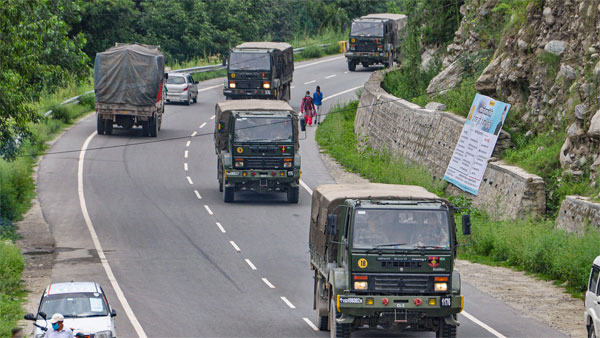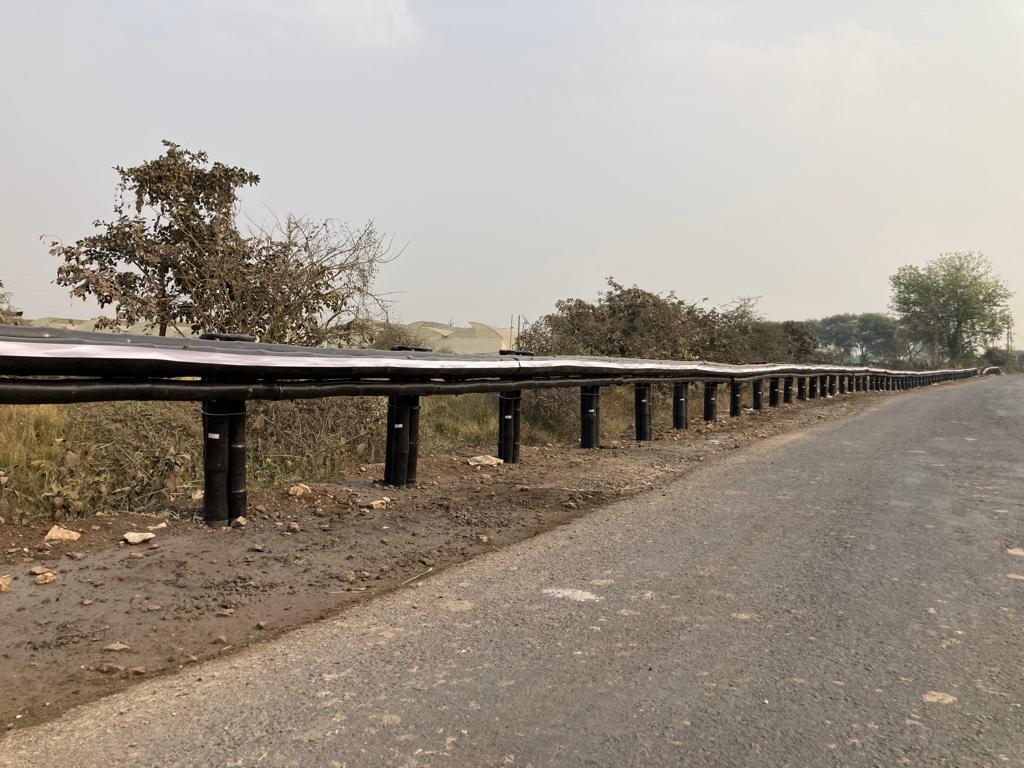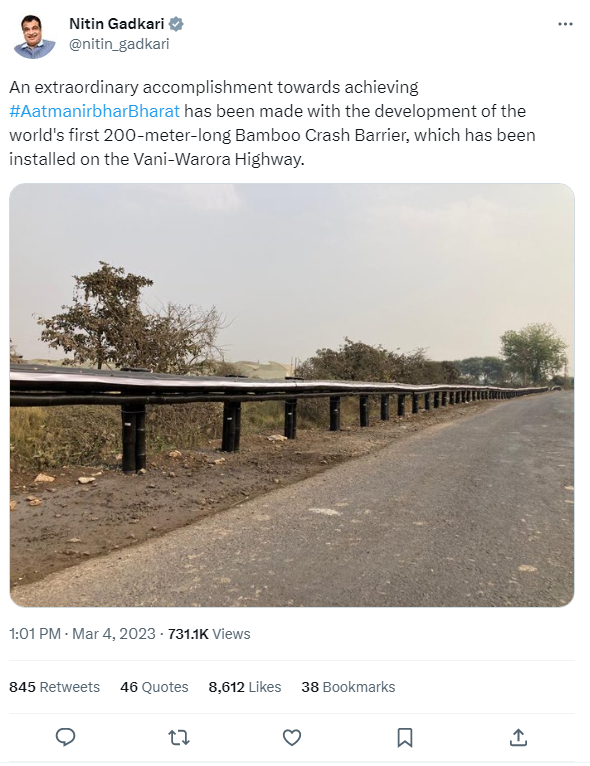Revolutionizing Road Safety: The World's First Bamboo Crash Barrier Installed in India
Introduction
Discover the ground breaking installation of the world’s first bamboo crash barrier in India, a remarkable feat that combines road safety with environmental sustainability. This blog explores the success of the 200-meter-long “Bahu Balli” bamboo crash barrier on the Vani-Warora Highway in Maharashtra. Join us as we delve into the eco-friendly benefits, rigorous testing and the positive impact this milestone has on the bamboo industry and India’s commitment to self-reliance.
The installation of the 200-meter-long bamboo crash barrier, lovingly known as “Bahu Balli,” showcases a sustainable alternative to traditional steel barriers. This innovative barrier not only enhances road safety but also offers economic opportunities for the thriving bamboo sector. Made from treated Bambusa Balcoa bamboo and coated with recycled High-Density Poly Ethylene (HDPE), it presents a durable and environmentally friendly solution.
The Installation Process: Bamboo Crash Barrier
Protection: Bamboo crash barriers strategically installed along roads shield vehicles from hazards, reducing the risk of accidents and keeping vehicles on the road.
Vehicle Redirection: Bamboo crash barriers are designed to redirect vehicles in the event of an accident. With their sturdy construction and engineered design, these barriers absorb and distribute impact forces, guiding vehicles back onto the road or redirecting them away from oncoming traffic.
Sustainability: The installation process of bamboo crash barriers promotes environmental sustainability by utilizing renewable bamboo resources. By selecting high-quality bamboo materials and employing appropriate treatment and preservation techniques, the barriers achieve longevity and durability while minimizing ecological impact. This sustainable approach contributes to a greener and more eco-friendly road safety solution.
Cost-Effectiveness: Bamboo crash barriers offer a cost-effective alternative to traditional barrier materials like concrete or metal. The installation process is efficient, requiring fewer resources and specialized equipment. The affordability and practicality of bamboo make it an attractive option for road safety projects, particularly in areas with budget constraints.

How Does Testing and Accreditation Ensure Reliability in Bamboo Crash Barriers?
Before the bamboo crash barrier was installed, it underwent rigorous testing and accreditation procedures at esteemed government-run institutions to ensure its reliability, safety, and suitability for road infrastructure projects. The Ministry of Road and Highways confirmed that the barrier had undergone thorough testing at various institutions, including the National Automotive Test Tracks (NATRAX) in Pithampur, Indore. Additionally, it achieved a Class 1 rating in the Fire Rating Test conducted at the Central Building Research Institute (CBRI) in Roorkee, highlighting its high level of fire resistance.
Moreover, the bamboo crash barrier received accreditation from the Indian Road Congress, further validating its suitability for use in road infrastructure projects. This accreditation signifies that the barrier meets the prescribed criteria and standards set by the Indian Road Congress, emphasizing its quality, reliability, and adherence to safety regulations.
What Are the Advantages of Bamboo Crash Barriers Over Steel Barriers?
Bamboo crash barriers surpass steel in environmental sustainability. One key aspect where bamboo surpasses steel is its impressive recycling value. With a recycling value ranging from 50% to 70%, bamboo outperforms steel barriers, which typically have a recycling value of 30% to 50%. This highlights the eco-consciousness of bamboo as a material choice for crash barriers.
By opting for bamboo crash barriers, India is taking a significant stride towards reducing carbon footprints and embracing sustainable materials for road safety. Bamboo, being a rapidly renewable resource, exhibits a lower carbon footprint compared to steel.
The growth rate of bamboo is considerably faster than that of trees commonly used in steel production, enabling more sustainable sourcing. Additionally, bamboo has the advantage of absorbing higher levels of carbon dioxide during its growth, contributing to the mitigation of greenhouse gas emissions.
India's Eco-friendly Approach with Bamboo Crash Barriers
India leads in sustainable infrastructure with a strong focus on innovation and sustainability. The introduction of bamboo crash barriers is transforming road safety practices worldwide. India’s commitment to eco-friendly solutions inspires other countries to follow suit by adopting bamboo and prioritizing the environment. The successful implementation of this barrier in India encourages global collaborations and knowledge sharing, resulting in improved road safety practices globally.
Promoting Aatmanirbhar Bharat and Environmental Conservation
India’s installation of the world’s first bamboo crash barrier aligns with its vision of an Aatmanirbhar Bharat (Self-Reliant India). By prioritizing bamboo as an alternative to steel, India showcases its commitment to sustainable development and environmental conservation. This pioneering step sets an inspiring example for the global community and emphasizes the importance of eco-friendly practices.
In a tweet, Nitin Gadkari, the Union Minister for Road Transport and Highways, expressed his appreciation for the accomplishment, “An extraordinary accomplishment towards achieving #AatmanirbharBharat has been made with the development of the world’s first 200-meter-long Bamboo Crash Barrier, which has been installed on the Vani-Warora Highway”
Conclusion
India’s installation of the world’s first bamboo crash barrier is a groundbreaking achievement that combines road safety with environmental sustainability. The success of the “Bahu Balli” barrier demonstrates India’s leadership in innovative and eco-friendly infrastructure solutions. By prioritizing bamboo over traditional materials like steel, India sets an inspiring example for the world and promotes collaborations for improved road safety practices globally. This milestone reinforces India’s commitment to self-reliance, environmental conservation, and the creation of a more sustainable future.




Leave A Comment